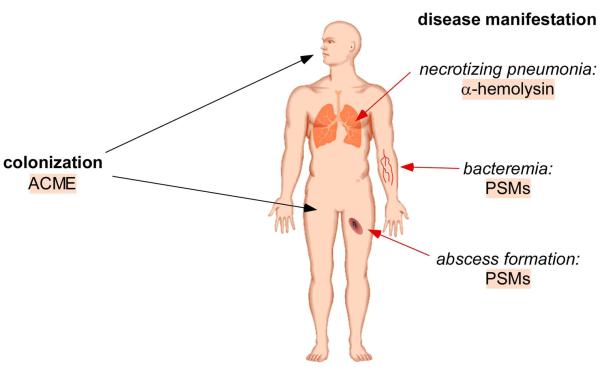Figure 4.
Molecular basis of CA-MRSA infection. The exceptional success of CA-MRSA strains in the community is likely due to enhanced virulence and colonization. In addition to an enhanced capacity for nasal carriage [11], CA-MRSA strains are also commonly carried on the skin, thereby facilitating skin-to-skin spread and even sexual transmission [71-75]. Using isogenic mutant strains in CA-MRSA, 3 factors have a proven impact on CA-MRSA pathogenesis, as determined in animal models. PSMs (α-type) are crucial for abscess formation and bacteremia, the most widely found manifestations of CA-MRSA disease. α-toxin has a dramatic impact on the development of necrotizing pneumonia, one of the rarer and more dramatic diseases CA-MRSA may cause. Whether PSMs have a role in necrotizing pneumonia, or α-hemolysin in abscess formation and bacteremia of CA-MRSA, has not been tested yet. Both factors are widely found in S. aureus strains. However, CA-MRSA strains may differ from HA-MRSA strains in the expression of these factors, as shown for PSMs. The mobile genetic element ACME is thought to enhance colonization and survival on the skin and is only found in the USA300 background. USA300 CA-MRSA strains with ACME outcompete isogenic strains without ACME in a rabbit infection model.

